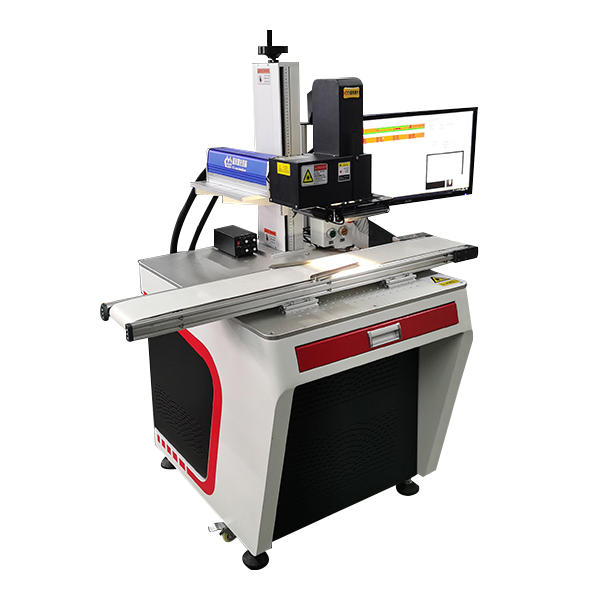In the laser marking process, according to the processing conditions, the shape of the workpiece and the processing requirements, different beam guidance and beam focusing should be confirmed, which requires a regular light guide system. According to the different functions of optical elements in the light guide system, it can be divided into the following categories. Five-axis marking machine
1. Beam turning system such as turning mirror. Because the angle between the direction of the laser output by the laser and the surface of the workpiece placed on the workbench does not meet the processing requirements, one or more mirrors are required to change the direction of beam transmission. At the same time, cooling should be selected for these lens holders.
2. Gathering system such as convex lens and concave lens. Through the focusing mirror, the output beam can be concentrated to a small diameter, thereby increasing the laser power density and completing the adjustment of the rapid prototyping process parameters. Three-dimensional marking machine

3. Uniform light system This system is used to form a light spot with uniform energy distribution, such as cutting and stacking transformation system, integrator and galvanometer system. Both theoretical and experimental studies have shown that the uniform energy distribution of the spot (the energy distribution on the cross-section of the high-order mode laser is more uniform than that of the low-order mode) helps to improve the quality of the formed parts. Therefore, when the laser output is a fundamental mode or low-order mode Gaussian beam, a regular optical system must be selected to overcome the shortcoming of uneven energy in the cross-section of the low-order mode. The cutting superposition transformation system cuts the Gaussian beam into several sub-systems in parallel, and expands them in parallel and perpendicular directions along the cutting line, and finally superimposes the sub-beams in a regular relative orientation to obtain a comparison of the energy distribution in the cross-section. Uniform light spot. The integrator system uses regularly arranged mirrors or projection mirrors to cut the uneven intensity of the beam, and superimpose the reflected beam or projection beam on the focal point to produce an integral effect to obtain a uniform spot. The galvanometer system uses high-frequency vibration The lens makes the beam vibrate at high frequency along the scanning direction, and during the heat treatment process, a uniform and wide energy spread is generated.
Mobile: 158-2042-3006
Tel: 0755-36976853
E-mail: sz@cmlaser88.com
Add: 4th Floor, Building B, Zhonghengsheng High-tech Park, Xinyu Road, Xinqiao Street, Baoan District, Shenzhen
|
|
Sales I: (Mr. Yuan)
138-2351-8896
Sales two :(Miss Luo)
158-2042-3006